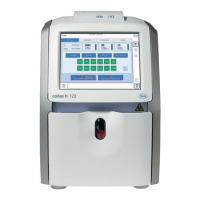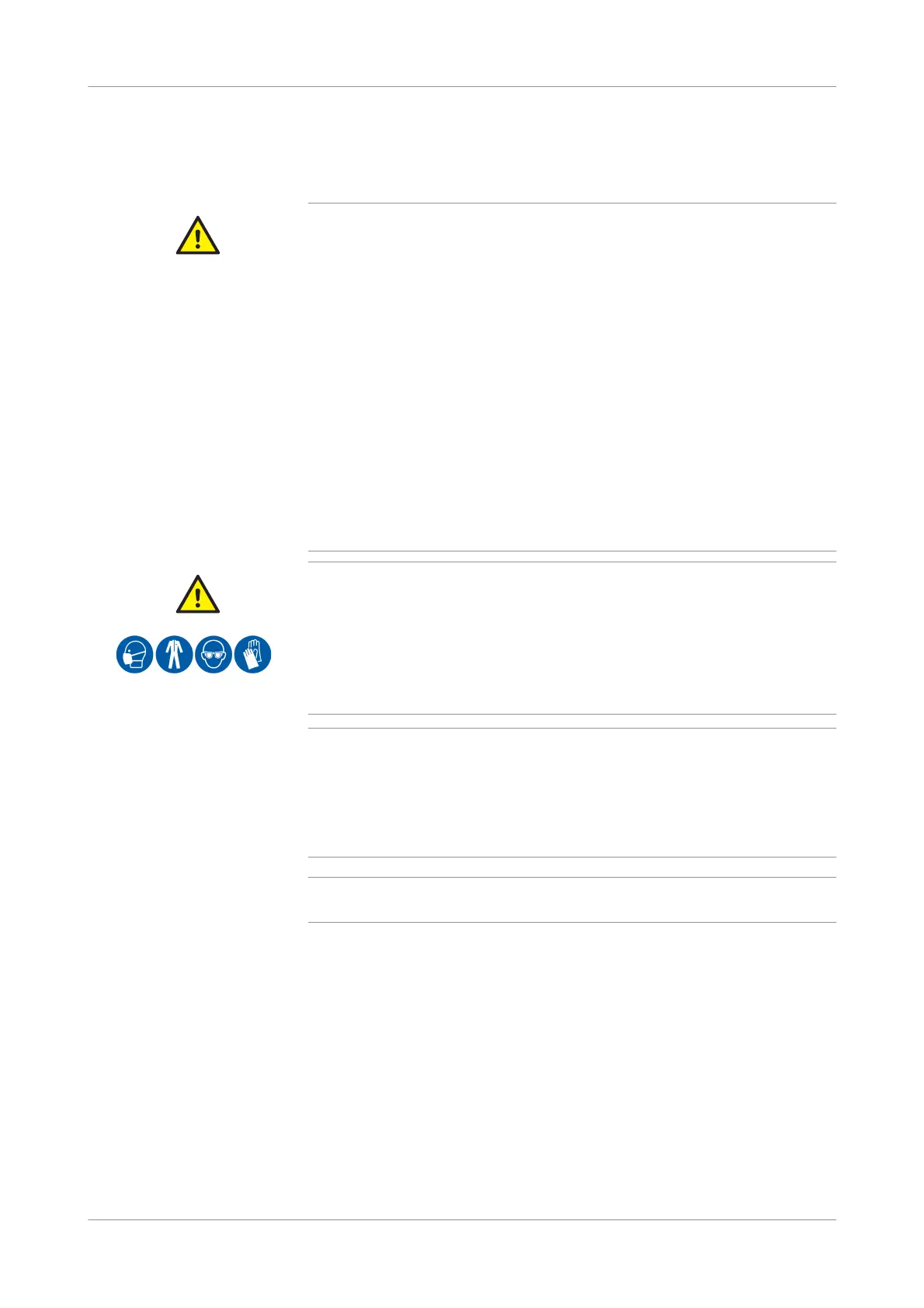Roche Diagnostics
236 Instructions for Use · Version 13.0
9 Calibration verification control cobas b 123 POC system
Installing AutoCVC Packs
Installing AutoCVC Packs
CAUTION
Removing the AutoQC Pack from the instrument may result in injury
Glass splinters from broken ampoules inside the AutoQC Pack may escape when you
remove the AutoQC Pack. This may result in personal injury.
r Wear appropriate personal protective equipment, such as protective gloves and safety
glasses.
r When handling and disposing AutoQC Packs, wear appropriate personal protective
equipment, such as laboratory clothing, protective gloves, safety glasses, face masks,
and safety visors, to prevent personal injury.
r When handling and disposing AutoQC Packs, prevent personal injury by wearing
appropriate personal protective equipment, such as:
o Lab gloves
o Lab coat
o Eye protection
o Face shield if there is a chance of splashing or splattering
r Take extra care when working with protective gloves, which can easily be pierced or
cut, leading to personal injury.
CAUTION
Turning over an AutoCVC Pack may result in spilled liquid
Reinstalling an AutoCVC Pack that has been turned over may spill AutoCVC material. In
addition, glass splinters from broken ampoules may destroy the AutoQC module.
r If you plan on reinstalling a used AutoCVC Pack, keep it in an upright position when it
is outside of the instrument.
r If liquid does spill from the AutoCVC Pack, wipe it up immediately and apply a
disinfectant. Wear appropriate personal protective equipment.
NOTICE
Inserting damaged AutoCVC Packs may damage the instrument
If damaged AutoCVC Packs are inserted into the cobas b 123 POC system, the AutoQC
module may become damaged.
r Before inserting AutoCVC Packs into the instrument for the first time, check for
possible damage during transportation. If an AutoCVC Pack shows evidence of
damage, do not insert it into the instrument.
q
AutoCVC Packs have to be acclimated to room temperature at least 24 hours before its
use.

